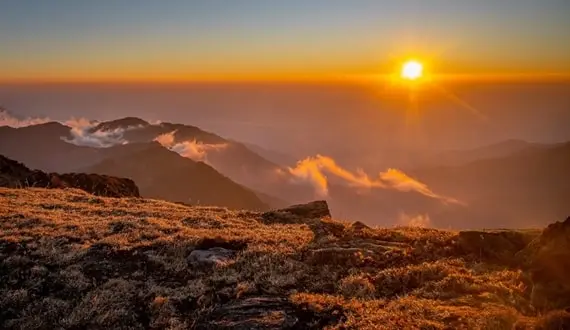Those who know anything about the beauty of Northeast India, they’re the ones who know the significance of Nagaland. If you want to see the real beauty of Northeast India with your own eyes, there is surely no better state than Nagaland. And today, we’re here with some super interesting facts about Nagaland which will excite you even more.
1. Mount Saramati Touching the Skies

If you were to guess, where is the tallest mountain located in India which is not actually part of the Himalayas? Well, most of you wouldn’t have the answer to that, but you do now because at 3,841 meters above sea level, Mount Saramati is the tallest mountain in India that is not in the Himalayas. It is also the largest mountain in Nagaland.
2. Special Pass Needed, Just To Visit This State
You can’t just hop in your car or on a plane and go visit this state, nah, it doesn’t work like that. Just like Sikkim, you actually need a permit to visit this state and without it, you’ll not be able to enter and explore legally. That’s only because the state government wants to protect the natural beauty of Nagaland, which can easily be ruined if the state is flooded with people, even the forest parts, you know?
3. The Falcon Capital of the World
The state of Nagaland is also referred to as the famous “Falcon Capital of the World.” Did you know that already? Well, you see, during their journey, millions of Amur falcons rest here, making for an amazing show that is just breathtakingly beautiful.
4. Home to Bhut Jolokia, You Know?
You may know that Bhut Jolokia is actually one of the spiciest peppers out there, which is also dubbed as Ghost Pepper, but did you know that it is actually Nagaland where this pepper is found and grown in abundance? This chili pepper is one of the hottest in the world, it has over 855,000 Scoville Heat Units (SHU), and it is an important part of Naga culture and food.
5. Naga Shawls, Super Famous
Naga scarves are more than just pretty clothes. Nagaland’s different tribes each have their own shawl designs, patterns, and colors that show their social position and tribal identity. Naga culture is rich with these shawls, which are often worn in traditional events.
6. The Battle of Kohima
Nagaland was the site of fierce battles during World War II. The Battle of Kohima, which was also called the “Battle of the Tennis Court,” was a major battle between Japanese and British troops. Today, the Kohima War Cemetery stands to remember those who died.
7. A Mosaic of Tribes
The Ao, Angami, Konyak, and Sumi are some of the 16 main tribes that live in Nagaland. You can really tell apart the Nagaland tribes by their language, traditions, and most important the way they dress themselves, and these dresses aren’t just for show, these are actually symbolic.
8. The Land of Festivals, Literally!
The name “Land of Festivals” fits Nagaland really really well. The Hornbill Festival is the most well-known of the many festivals that each tribe holds. Held every year from December 1 to 10, it is a grand and exciting way to show off the Naga people’s rich culture and customs.
9. Asia’s First Green Village In Nagaland?
It was Khonoma village’s big choice in 1998 to ban hunting, logging, and cutting down trees that made it Asia’s first “green village.” Without a doubt, this very thing has changed the way things are in Nagaland, and we hope that it stays that way.
10. Blossoming Beauties, Yes, The Rhododendron Arboreum
The Rhododendron Arboreum, Nagaland’s state flower, makes the state’s natural beauty stand out, you know? People who love nature and plants will love the Dzukou Valley because it has the rare and beautiful Dzukou flowers and rhododendrons scattered literally everywhere which just looks stunning.
11. Kohima Bara Basti
Kohima Bara Basti is one of the biggest villages in Asia and a real example of how the Naga people used to build homes and live together as a community. This old town is an important part of Kohima, which is the state capital, and shows how the Naga people live.
12. Largest Electric Guitar Ensemble
The biggest group of people playing electric guitars set a Guinness World Record on January 12, 2013, right here in Nagaland. That was precisely when people from all over the world came together to support peace and unity at this amazing event in Dimapur.


